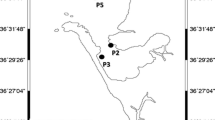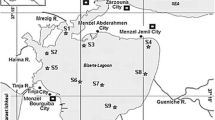Abstract
Waukegan Harbor in Illinois was designated as a Great Lakes Area of Concern due to high concentrations of sediment-associated polychlorinated biphenyls (PCBs). The objective of this study was to evaluate the toxicity of 20 sediment samples collected after remediation (primarily dredging) of Waukegan Harbor for PCBs. A 42-day whole sediment toxicity test with the amphipod Hyalella azteca (28-day sediment exposure followed by a 14-day reproductive phase) and sediment toxicity tests with Microtox® were conducted to evaluate sediments from Waukegan Harbor. Endpoints measured were survival, growth, and reproduction (amphipods) and luminescent light emission (bacteria). Survival of amphipods was significantly reduced in 6 of the 20 sediment samples relative to the control. Growth of amphipods (either length or weight) was significantly reduced relative to the control in all samples. However, reproduction of amphipods identified only two samples as toxic relative to the control. The Microtox basic test, conducted with organic extracts of sediments identified only one site as toxic. In contrast, the Microtox solid-phase test identified about 50% of the samples as toxic. A significant negative correlation was observed between reproduction and the concentration of three polynuclear aromatic hydrocarbons (PAHs) normalized to total organic carbon. Sediment chemistry and toxicity data were evaluated using sediment quality guidelines (consensus-based probable effect concentrations, PECs). Results of these analyses indicate that sediment samples from Waukegan Harbor were toxic to H. azteca contaminated at similar contaminant concentrations as sediment samples that were toxic to H. azteca from other areas of the United States. The relationship between PECs and the observed toxicity was not as strong for the Microtox test. The results of this study indicate that the first phase of sediment remediation in Waukegan Harbor successfully lowered concentrations of PCBs at the site. Though the sediments were generally not lethal, there were still sublethal effects of contaminants in sediments at this site observed on amphipods in long-term exposures (associated with elevated concentrations of metals, PCBs, and PAHs).
Similar content being viewed by others
Author information
Authors and Affiliations
Additional information
Received: 2 November 1999/Accepted: 13 May 2000
Rights and permissions
About this article
Cite this article
Kemble, N., Hardesty, D., Ingersoll, C. et al. An Evaluation of the Toxicity of Contaminated Sediments from Waukegan Harbor, Illinois, Following Remediation. Arch. Environ. Contam. Toxicol. 39, 452–461 (2000). https://doi.org/10.1007/s002440010127
Published:
Issue Date:
DOI: https://doi.org/10.1007/s002440010127




